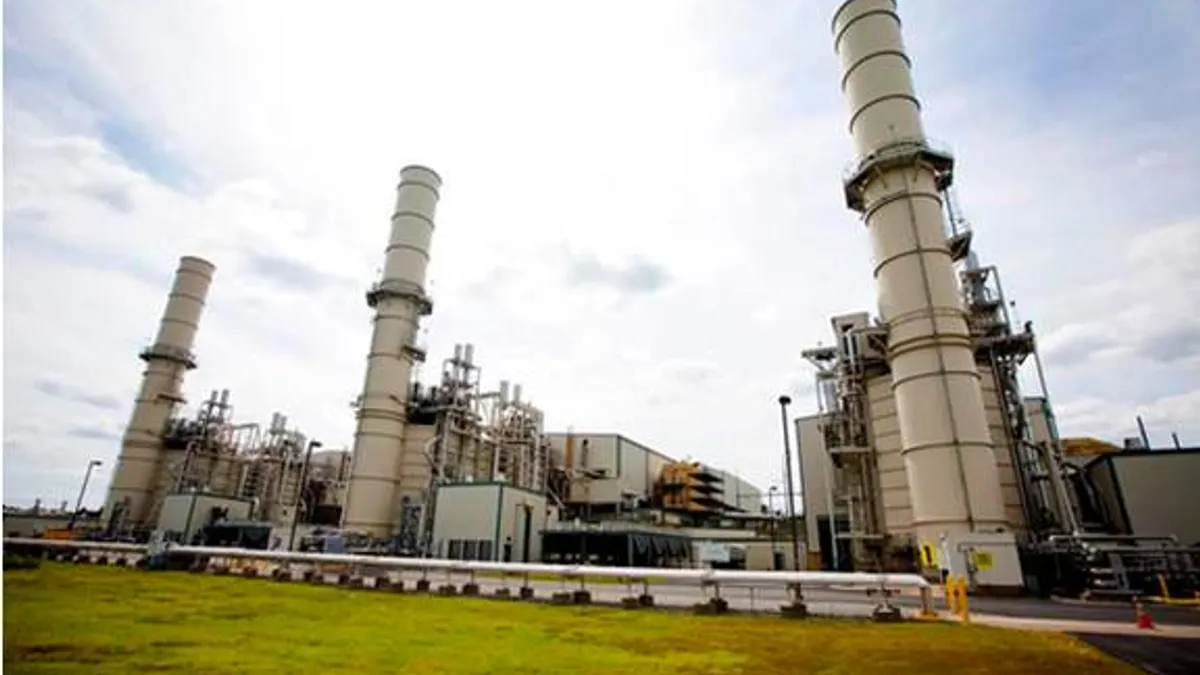Dive Brief:
- This year, carbon dioxide emissions from natural gas associated with the energy sector will exceed those from coal for the first time since 1972, according to the U.S. Energy Information Administration.
- Though coal is more carbon-intensive, increases in gas consumption and a reduction in coal-fired power mean mean the CO2 emissions from gas will be 10% greater this year, the agency said.
- Last year, natural gas consumption was 81% higher than coal consumption, and their carbon emissions were nearly equal. From 1990 to about 2005, consumption of coal and natural gas in the United States was relatively similar.
Dive Insight:
Natural gas is less carbon-intensive than coal, but as environmental advocates have been pointing out for years, the fuel still has significant emissions related to its use. And now, for the first time in about 45 years, those emissions from gas are set to exceed coal's.
It's a striking statistic that points to just how markedly the power sector has changed, and how much of the country heats and generates power with natural gas.
According to EIA's latest Short-Term Energy Outlook, energy-related CO2 emissions from natural gas will be 10% greater than those from coal in 2016. The agency said gas consumption results in about 52 million metric tons of CO2 for every quadrillion British thermal units, while coal's carbon intensity is about 95 MMmtCO2/quad Btu — more than 80% higher than gas's carbon intensity, on average.
"Annual carbon intensity rates in the United States have generally been decreasing since 2005," EIA said in a research note posted this week. As the country has shifted away from coal, that has helped lower the carbon-intensity measure.
"Another contributing factor to lower carbon intensity is increased consumption of fuels that produce no carbon dioxide, such as nuclear-powered electricity and renewable energy," EIA said. "As these fuels make up a larger share of U.S. energy consumption, the U.S. average carbon intensity declines."
The United States' total total carbon intensity has declined from 60 MMmtCO2/quad Btu in 2005 to 54 MMmtCO2/quad Btu in 2015.
In just the power sector, gas' share of the United States energy mix is expected to edge out coal's this year following decades of coal's dominance. Natural gas will generate 34% of the United States' power this year, according to recent EIA estimates. Coal's share of the power mix is expected to be 30%, with nuclear and renewables following at 19% and 15%, respectively.
The EIA's emission numbers measure only carbon, and not methane emissions, a more potent greenhouse gas emitted from gas drilling and transport operations. If methane emissions reach above about 4% of total gas production, researchers say they begin to cancel out climactic benefits of gas over coal, though methane persists in the atmosphere for a shorter period of time.
A 2014 review of gas literature concluded the national average leakage rate is about 5.4%. The Obama administration has announced regulations aimed at cutting methane emissions 45% from 2012 levels by 2025.















